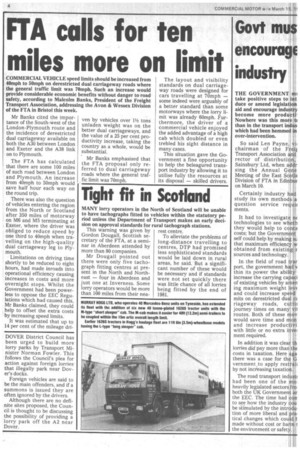FTA calls for ten miles more on limit
Page 6

If you've noticed an error in this article please click here to report it so we can fix it.
COMMERCIAL VEHICLE speed limits should be increased from 40mph to 50mph on derestricted dual carriageway roads where the general traffic limit was 70mph. Such an increase would provide considerable economic benefits without danger to road safety, according to Malcolm Banks, President of the Freight Transport Association, addressing the Avon & Wessex Division of the FTA in Bristol this week.
Mr Banks cited the importance of the South-west of the London-Plymouth route and the incidence of derestricted dual carriageway available on both the A30 between London and Exeter and the A38 link on to Plymouth.
The FTA has calculated that there are some 100 miles of such road between London and Plymouth. An increase from 40mph to 50mph would save half hour each way on the round trip.
There was also the question of vehicles entering the region from the North or Scotland after 350 miles of motorway on M6 and M5 terminating at Exeter, where the driver was obliged to reduce speed by one third to 40mph when travelling on the high-quality dual carriageway leg to Plymouth.
Limitations on driving time shortly to be reduced to eight hours, had made inroads into operational efficiency causing increases in costs and more overnight stops. Whilst the Government had been powerless to oppose the EEC Regulations which had caused this, Mr Banks claimed, they could help to offset the extra costs by increasing speed limits.
It was estimated that up to 14 per cent of the mileage dri yen by vehicles over 11/2 tons unladen weight was on the better dual carriageways, and the value of a 25 per cent productivity increase, taking the country as a whole, would be substantial.
Mr Banks emphasised that the FTA proposal only referred to dual carriageway roads where the general traffic limit was 70mph. The layout and visibility standards on dual carriageway roads were designed for cars travelling at 70mph — some indeed were arguably of a better standard than some motorways where the lorry limit was already 60mph. Furthermore, the driver of a commercial vehicle enjoyed the added advantage of a high cab which doubled or even trebled his sight distance in many cases.
This situation gave the Government a fine opportunity to help the beleagured transport industry by allowing it to utilise fully the resources at its disposal — skilled drivers.
































































































































